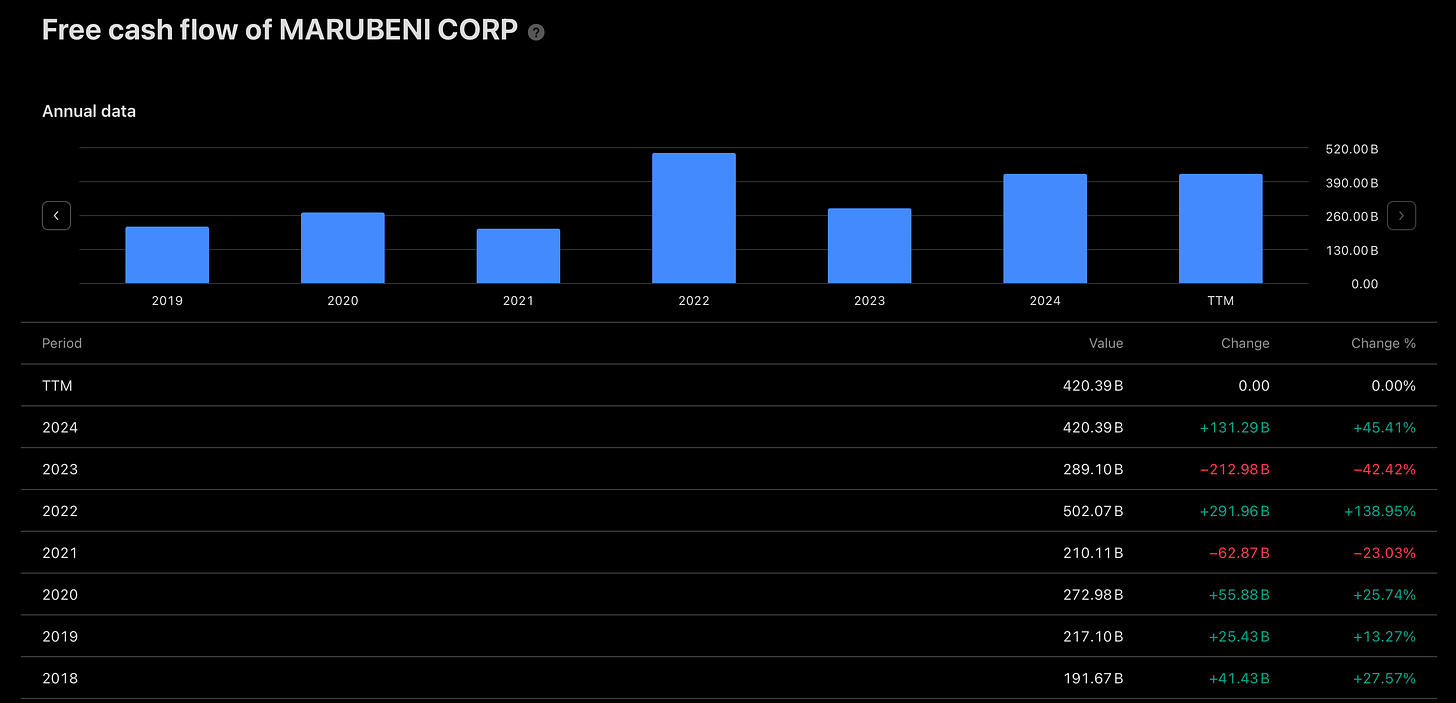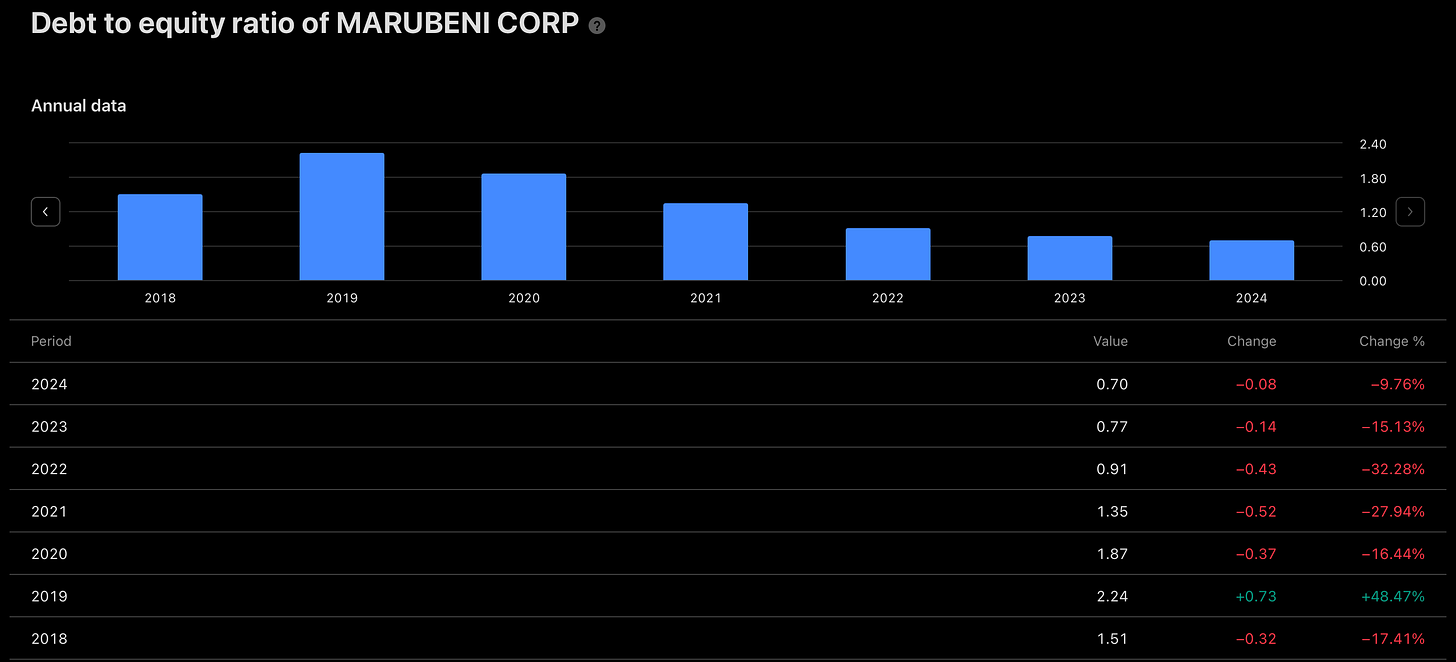Marubeni Corporation: A Goliath priced like David
A comprehensive view of Marubeni Corporation's fundamentals, future business prospects and its company valuation
Marubeni Corporation, founded by Chubei Itoh in 1858, started off initially as a textile trading firm. It was dismantled in the aftermath of World War II, during the occupation by the Allies, and re-emerged in 1949. After a series of acquisitions, purchases, mergers and spin-offs, Marubeni transformed and acquired a wide array of business interests leaving its textile dominant focus firmly in the past.
Figure 1: Chubei Itoh (1842 - 1903)
Today, Marubeni is indisputably a “Sogo shosa” (the term used for large Japanese conglomerate-style trading houses). It operates in the fields of power (energy), infrastructure, aircraft and ship manufacturing/leasing, mining and metals, food and agricultural products (both inputs as well as finished goods), fast-moving-consumer-goods and more. Its agricultural and food divisions happen to be the largest, collectively accounting for about half its revenue. Marubeni is one of the largest conglomerates in Japan, with a large portion of its business coming from exports (especially to the U.S.).
Figure 2: Marubeni’s revenue breakdown by segment and region (Source: TradingView)
Berkshire Hathaway, under the leadership of the notable value investor Warren Buffett, has acquired a high single digit stake in the company as well. Mr. Buffett, in the latest Berkshire Hathaway shareholder meeting went as far as to state that “in the next 50 years, we won’t give a thought to selling those [shares of Marubeni]”. Over the past five years, Marubeni has successfully returned more than 240% in capital appreciation alone (which would only increase when the sizeable dividend yield is factored in) thus more than substantially tripling the value of an investment in the company. However, to understand the reason for this capital appreciation, we must view the inner workings of the company.
A fundamental analysis of Marubeni reveals multiple factors that have contributed to Mr. Buffett’s backing of the company. First, the company has shown a compounded annual growth rate of just over 10% in terms of its Free Cash Flow (FCF) in the past 7 years, which is exceptional for its scale.
Figure 3: Marubeni’s Free Cash Flow or FCF (Source: TradingView)
Moreover, it has consistently chipped away at its debt-to-equity ratio and brought it down to a moderate 0.70 which is quite comfortable given the relatively low cost of raising debt capital in Japan (about 3%) as calculated via its interest expenditure and total debt. Its return on invested capital stood at 8.97% in 2024 but its management has released a medium-term plan to improve the company’s capital efficiency by selling unprofitable/inefficient businesses and freeing up capital for the high return avenues.
Figure 4: Marubeni’s debt to equity ratio (Source: TradingView)
The management’s strategy also makes an allowance for a 40% dividend payout ratio (its current dividend yield stands at a robust 3.94%). Marubeni’s management has also recently mentioned that the company plans to move up the value-chain and produce consumer-facing high value-added products to capture a greater portion of the margins. Moreover, it would seem unlikely that the U.S. tariffs would affect its core business operations in the long-run due to its extensive investments within the U.S. as well as its diverse portfolio of product offerings. The management is also making strides into the healthcare segment, by acquiring Sumitomo’s pharmaceutical business in Asia. However, one must keep in mind that relatively rapid divestments and investments might not immediately translate to higher rates of growth or returns. Therefore, while acknowledging the tailwind in favour of Marubeni, we still consider the possibility of unfavourable developments (such as a worsening trade climate, and poor economic growth in their markets) while moving onto the valuation of the company.
Given their strong previous performance, and the relatively encouraging management policy towards the medium-term, an FCF growth of 5% YOY over the next 10 years, a terminal growth rate of 2% and a discount rate of 8% seem appropriate. We assume a 5% CAGR in the FCF due to the possibility that the previous growth was due to the leveraged position of the company and other positive factors that may not come to hold over the next decade. We believe a discount rate of 8% is justified because of the low-cost of debt in Japan coupled with the idea that Marubeni is a Sogo shosa with a heavily diversified set of business interests.
Figure 5: The present value of Marubeni Corporation’s stream of Free Cash Flow
When one performs a simple discounted cash flow with the 2023 FCF figure as the base year (given a total share count of 1.67 billion), the per share value comes to about 3,650 JPY. The company currently trades at 2,536 JPY per share, with a P/E ratio of 8.5 and a P/B ratio of 1.09. Given that the share price trades at a discount to the proposed intrinsic value, we believe that as of today, Marubeni is a value buy.
Disclaimer
This Substack does not provide investment advice.
The author is not a SEBI-registered investment advisor.
The content in this article is intended solely for informational and discussion purposes. It is not a recommendation to buy or sell any financial instruments or other products.
Investors should seek personalized advice from their tax, financial, legal, and other advisers regarding the risks and benefits of any transaction before making investment decisions.
The information provided in this article is sourced from generally available information It may be incomplete or summarized.
Investing in financial instruments or other products involves significant risk, including the potential total loss of the invested principal. This article and its author do not claim to identify all the risks or key factors associated with any transaction. The author of this website is not liable for any loss (whether direct, indirect, or consequential) that may result from the use of the information contained in or derived from this website.









Buying BRK is enough to hold Marubeni as well right ?
nice analysis .. thank you sir & sashwat. appreciate if you can also include the ticker symbol for US listed asset.